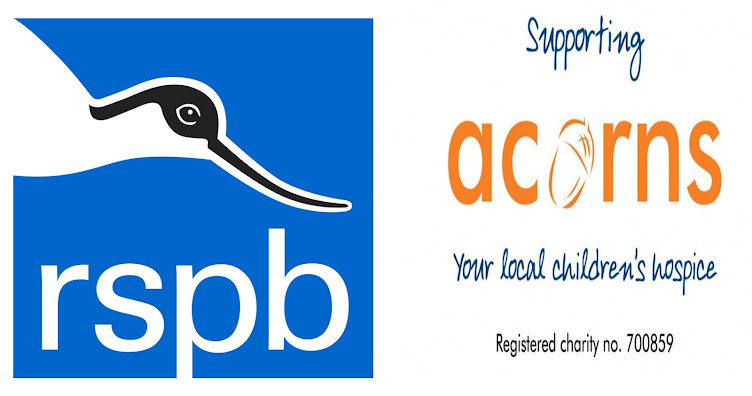Tuesday
19th April Light to fresh NE Very sunny all
day. Cool 8C with cold wind.
Early
morning with nightingales, three of them singing in turns and
occasionally coming out into obscured views. I am sitting on a grassy
knoll amongst gorse bushes listening. Cetti's, willow warblers, chiff
chaff and blackcap all add voice to the chorus.
With
bird number 215 on the list I head back towards Minsmere and stop to
walk a public footpath to search for whitethroat. The area looks
perfect for them with thick bramble patches and sporadic bits of
hawthorn hedge. I chat with a local woman out for a walk in the
bright sunshine. A whitethroat comes out onto the topmost twig of a
hawthorn and scratches it's song. Bird number 216.
To
the Island Mere hide just in time to see a bittern fly over the reeds
to land nearby in the dense reedbed. Four bearded tits, including two
males do the same. There is the briefest glimpse of an otter way over
the back of the mere amongst the reedbed edge.
Once
more to the scrape with my mobile staying as silent as the grave.
Every minute I am hoping for news of some rare bird having been found
within cycling distance but nothing. The wind and weather conditions
are all wrong. Cold northerlies and full sunshine is either stopping
migrant birds from moving in large numbers or some are flying
straight over with no reason for stopping.
I
spend some time on the internet in the cafe before heading once more
for the scrape.
Apparently
the scrape was the idea of the first resident warden at Minsmere, the
famous Bert Axell. The area had been flooded during World war 2 to
prevent any possibility of German tanks finding an area to invade.
The wetlands created attracted avocet which bred for the first time
on over one hundred years. These attracted visitors and ber came up
with the scrape idea for the avocets in the early 1960s, an idea
which has been copied around the world. When the RSPB were given the
opportunity to buy the area they had to quickly raise £240,000 and
thankfully they managed to do just that.
At
the scrape, two common terns are flying around as three more rest on
a muddy island. The bar-tailed godwit is still here as are a number
of Mediterranean gulls.
Afterwards
I head around for the sea and spend an hour seawatching seeing three
harbour porpoise and a single red-throated diver heading north low
over the sea.
A
male stonechat is atop some gorse near the north walk looking superb
in the sun. There is no sign of the stone curlews in the field but
seven red deer are relaxing there.
Once
more through the woods I head for an evening at the Island Mere hide,
stopping on the way to watch a superb male redstart fresh in, and
watch as otters and bitterns give great views. Outside, in the cold
wind, and RSPB staff member is logging booming bitterns, mapping the
booms so that she can collate results with other colleagues later and
see how many booming males the reserve has.
The
Green Year list now stands at 216, still 30 birds ahead of this time
last year.




No comments:
Post a Comment